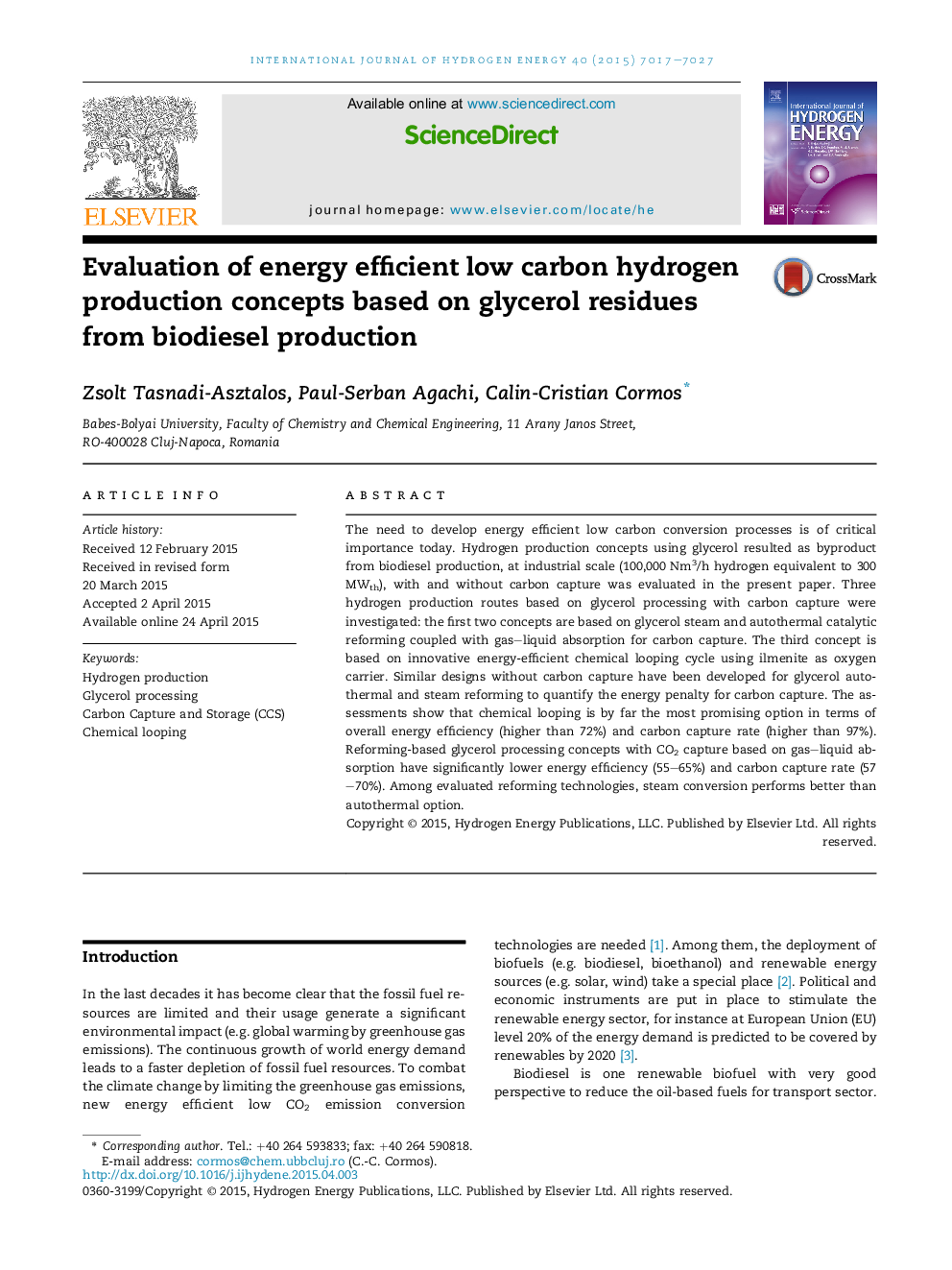| Article ID | Journal | Published Year | Pages | File Type |
|---|---|---|---|---|
| 1279885 | International Journal of Hydrogen Energy | 2015 | 11 Pages |
•Assessment of hydrogen production from glycerol conversion with carbon capture.•Carbon capture options suitable for glycerol thermo-chemical processing.•High energy efficient iron-based chemical looping method for glycerol conversion.•Energy vector poly-generation capability based on glycerol conversion.
The need to develop energy efficient low carbon conversion processes is of critical importance today. Hydrogen production concepts using glycerol resulted as byproduct from biodiesel production, at industrial scale (100,000 Nm3/h hydrogen equivalent to 300 MWth), with and without carbon capture was evaluated in the present paper. Three hydrogen production routes based on glycerol processing with carbon capture were investigated: the first two concepts are based on glycerol steam and autothermal catalytic reforming coupled with gas–liquid absorption for carbon capture. The third concept is based on innovative energy-efficient chemical looping cycle using ilmenite as oxygen carrier. Similar designs without carbon capture have been developed for glycerol autothermal and steam reforming to quantify the energy penalty for carbon capture. The assessments show that chemical looping is by far the most promising option in terms of overall energy efficiency (higher than 72%) and carbon capture rate (higher than 97%). Reforming-based glycerol processing concepts with CO2 capture based on gas–liquid absorption have significantly lower energy efficiency (55–65%) and carbon capture rate (57–70%). Among evaluated reforming technologies, steam conversion performs better than autothermal option.
